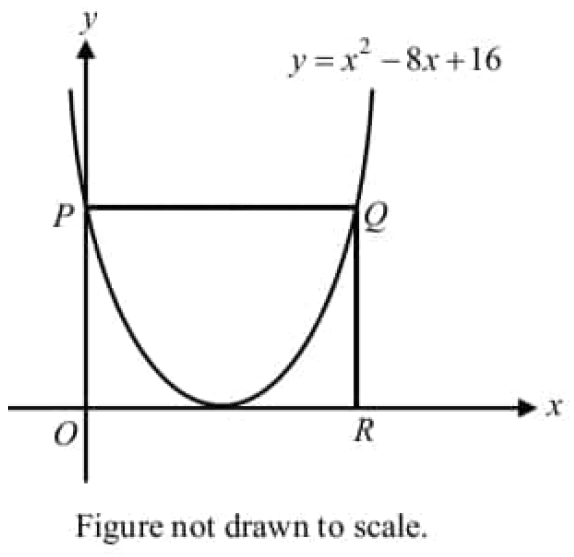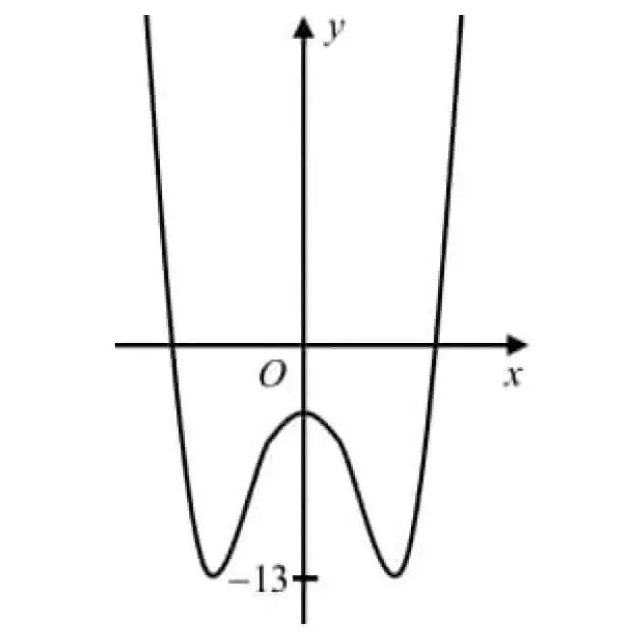EQUIVALENT RATIONAL NUMBERS
We know how to write equivalent fractions when a fraction is given. Since a rational number can be represented by a fraction, we can think of equivalent rational numbers, duly obtained through equivalent fractions.
Suppose a rational number is in fractional form. Multiply its numerator and denominator by the same non-zero integer to obtain a rational number which is equivalent to it.
For example, ⁻²⁄₃ is equivalent to ⁻⁶⁄₉. Beccause
⁻²⁄₃ = ⁻⁽²ˣ³⁾⁄₍₃ₓ₃₎ = ⁻⁶⁄₉
⁻²⁄₃ is also equivalent to ⁻⁸⁄₁₂. Beccause
⁻²⁄₃ = ⁻⁽²ˣ⁴⁾⁄₍₃ₓ₄₎ = ⁻⁸⁄₁₂
Thus,
⁻²⁄₃ = ⁻⁶⁄₉ = ⁻⁸⁄₁₂
Examples 1-7 : Write four rational numbers equivalent to the given rational number.
Example 1 :
⅔
Solution :
To find four equivalent rational numbers, multiply both numerator and denominator of the fraction ⅔ by 2, 3, 4 and 5.
⅔ x ²⁄₂ = ⁴⁄₁₂
⅔ x ³⁄₃ = ⁶⁄₉
⅔ x ⁴⁄₄ = ⁸⁄₁₂
⅔ x ⁵⁄₅ = ¹⁰⁄₁₅
Example 2 :
⁴⁄₇
Solution :
⁴⁄₇ x ²⁄₂ = ⁸⁄₁₄
⁴⁄₇ x ³⁄₃ = ¹²⁄₂₁
⁴⁄₇ x ⁴⁄₄ = ¹⁶⁄₂₈
⁴⁄₇ x ⁵⁄₅ = ²⁰⁄₃₅
Example 3 :
⁻⁶⁄₇
Solution :
⁻⁶⁄₇ x ²⁄₂ = ⁻¹²⁄₁₄
⁻⁶⁄₇ x ³⁄₃ = ⁻¹⁸⁄₂₁
⁻⁶⁄₇ x ⁴⁄₄ = ⁻²⁴⁄₂₈
⁻⁶⁄₇ x ⁵⁄₅ = ⁻³⁰⁄₃₅
Example 4 :
⁷⁄₉
Solution :
⁷⁄₉ x ²⁄₂ = ¹⁴⁄₁₈
⁷⁄₉ x ³⁄₃ = ²¹⁄₂₇
⁷⁄₉ x ⁴⁄₄ = ²⁸⁄₃₆
⁷⁄₉ x ⁵⁄₅ = ³⁵⁄₄₅
Example 5 :
2⅓
Solution :
2⅓ is a mixed number. To get four equivalent rational numbers to 2⅓, convert 2⅓ to an improper fraction.
2⅓ = ⁷⁄₃
To find four equivalent rational numbers, multiply both numerator and denominator of the fraction ⁷⁄₃ by 2, 3, 4 and 5.
⁷⁄₃ x ²⁄₂ = ¹⁴⁄6
⁷⁄₃ x ³⁄₃ = ²¹⁄9
⁷⁄₃ x ⁴⁄₄ = ²⁸⁄12
⁷⁄₃ x ⁵⁄₅ = ³⁵⁄15
The four rational numbers equivalent to 2⅓ are
¹⁴⁄6, ²¹⁄9, ²⁸⁄12, ³⁵⁄15
Example 6 :
1.2
Solution :
Convert the given decimal number to a fraction.
1.2 = ¹²⁄₁₀
= ⁶⁄₅
To find four equivalent rational numbers, multiply both numerator and denominator of the fraction ⁷⁄₃ by 2, 3, 4 and 5.
⁶⁄₅ x ²⁄₂ = ¹²⁄₁₀
⁶⁄₅ x ³⁄₃ = ¹⁸⁄₁₅
⁶⁄₅ x ⁴⁄₄ = ²⁴⁄₂₀
⁶⁄₅ x ⁵⁄₅ = ³⁰⁄₂₅
The four rational numbers equivalent to 1.2 are
¹²⁄₁₀, ¹⁸⁄₁₅, ²⁴⁄₂₀, ³⁰⁄₂₅
Example 7 :
Write a rational number equivalent to ¾ with denominator 20.
Solution :
In the given fraction ¾, the denominator is 4. To get denominator 20, we have to multiply 4 by 5.
To get a rational number equivalent to ¾ with denominator 20, multiply both numerator and denominator of the fraction ¾ by 5.
¾ = ¾ x ⁵⁄₅
= ¹⁵⁄₂₀
Example 8 :
Write a rational number equivalent to ⁻⁷⁄₈ with denominator 56.
Solution :
In the given fraction ⁻⁷⁄₈, the denominator is 8. To get denominator 56, we have to multiply 8 by 7.
To get a rational number equivalent to ⁻⁷⁄₈ with denominator 56, multiply both numerator and denominator of the fraction ⁻⁷⁄₈ by 7.
⁻⁷⁄₈ = ⁻⁷⁄₈ x ⁷⁄₇
= ⁻⁴⁹⁄₅₆
Example 9 :
Write a rational number equivalent to ¹⁰⁄₂₈ with denominator 14.
Solution :
In the given fraction ¹⁰⁄₂₈, the denominator is 28. To get denominator 14, we have to divide 28 by 2.
To get a rational number equivalent to ¹⁰⁄₂₈ with denominator 14, divide both numerator and denominator of the fraction ¹⁰⁄₂₈ by 2.
¹⁰⁄₂₈ = ⁽¹⁰÷²⁾⁄₍₂₈÷₂₎
= ⁵⁄₁₄
Example 10 :
Write a rational number equivalent to ¹⁵⁄₂₁ with denominator 7.
Solution :
In the given fraction ¹⁵⁄₂₁, the denominator is 7. To get denominator 7, we have to divide 21 by 3.
To get a rational number equivalent to ¹⁵⁄₂₁ with denominator 7, divide both numerator and denominator of the fraction ¹⁵⁄₂₁ by 3.
¹⁵⁄₂₁ = ⁽¹⁵÷³⁾⁄₍₂₁÷₃₎
= ⁵⁄₇
Example 11 :
If the two rational numbers ½ and ˣ⁄₈ are equivalent, find the value of x.
Solution :
Since ½ and ˣ⁄₈ are equivalent rational numbers,
½ = ˣ⁄₈
The denominator on the right side is 8. In the fraction ½, the denominator is 2. To get denominator 8, we have to multiply 2 by 4.
To get a rational number equivalent to ½ with denominator 8, multiply both numerator and denominator of the fraction ½ by 4.
⁽¹ˣ⁴⁾⁄₍₂ₓ₄₎ = ˣ⁄₈
⁴⁄₈ = ˣ⁄₈
The above two rational numbers are equivalent with the same denominator. Then, the numerators must be equal.
Therefore,
x = 4
Example 12 :
If the two rational numbers ⁻³⁄₄ and ʸ⁄₂₀ are equivalent, find the value of y.
Solution :
Since ⁻³⁄₄ and ʸ⁄₂₀ are equivalent rational numbers,
⁻³⁄₄ = ʸ⁄₂₀
The denominator on the right side is 20. In the fraction ⁻³⁄₄, the denominator is 4. To get denominator 20, we have to multiply 4 by 5.
To get a rational number equivalent to ⁻³⁄₄ with denominator 20, multiply both numerator and denominator of the fraction ⁻³⁄₄ by 5.
⁻⁽³ˣ⁵⁾⁄₍₄ₓ₅₎ = ʸ⁄₂₀
⁻¹⁵⁄₂₀ = ʸ⁄₂₀
Therefore,
y = -15
Example 13 :
If the two rational numbers ˣ⁄₅ and ⁹⁄₁₅ are equivalent, find the value of x.
Solution :
Since ˣ⁄₅ and ⁹⁄₁₅ are equivalent rational numbers,
ˣ⁄₅ = ⁹⁄₁₅
The denominator on the right side is 15. In the fraction ⁹⁄₁₅, the denominator is 15. To get denominator 5, we have to divide 15 by 3.
To get a rational number equivalent to ⁹⁄₁₅ with denominator 5, divide both numerator and denominator of the fraction ⁹⁄₁₅ by 3.
ˣ⁄₅ = ⁽⁹÷³⁾⁄₍₁₅÷₃₎
ˣ⁄₅ = ⅗
Therefore,
x = 3
Kindly mail your feedback to v4formath@gmail.com
We always appreciate your feedback.
©All rights reserved. onlinemath4all.com
Recent Articles
-
Permutation Problems with Solutions
May 08, 25 12:28 PM
Permutation Problems with Solutions -
Digital SAT Math Problems and Solutions (Part - 159)
May 08, 25 01:39 AM
Digital SAT Math Problems and Solutions (Part - 159) -
Digital SAT Math Problems and Solutions (Part - 158)
May 06, 25 11:00 AM
Digital SAT Math Problems and Solutions (Part - 158)

